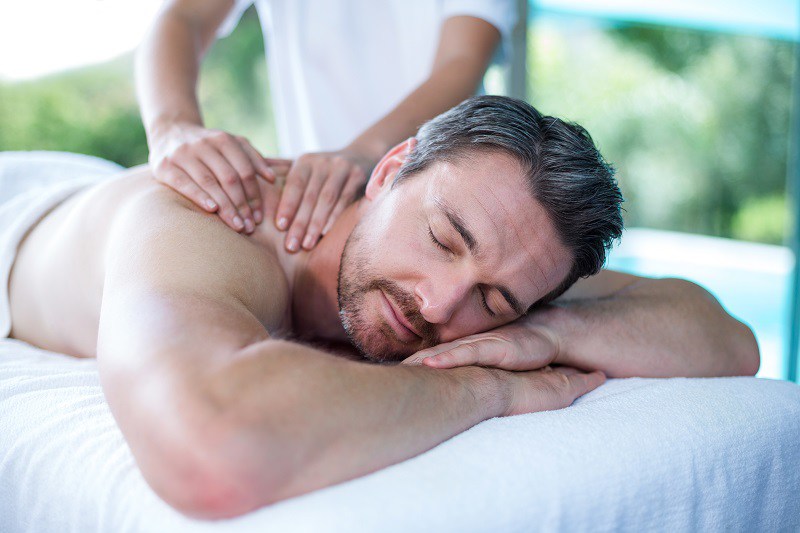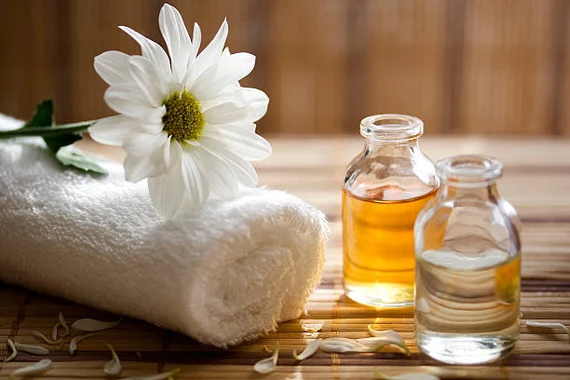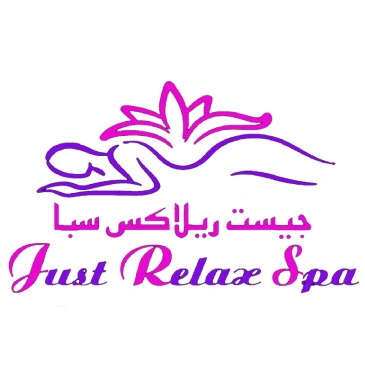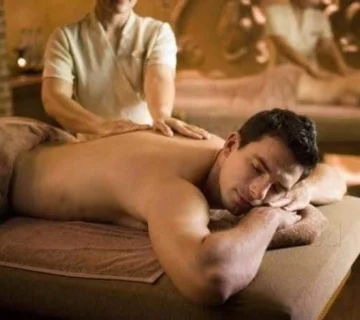Are you ready to experience ultimate relaxation and rejuvenation? Look no further than this comprehensive guide to body massage. Whether you’re seeking relief from stress, muscle tension, or simply want to indulge in some self-care, body massage is the ultimate solution. From Swedish and deep tissue to hot stone and aromatherapy, this guide explores the different types of massages and their incredible benefits.
In our fast-paced lives, taking the time to unwind and pamper ourselves is essential. A body massage not only provides physical relief but also promotes mental well-being. It can improve circulation, relieve pain, and release toxins from the body, leaving you feeling refreshed and revitalized.
But the benefits of body massage extend beyond just the physical. It can also reduce anxiety and depression, improve sleep quality, and boost your overall mood. With the right techniques and the power of touch, body massage has the ability to nurture both body and mind.
So, whether you’re a newbie or a seasoned spa-goer, this guide has everything you need to know to make the most of your body massage experience. Get ready to relax, revive, and rejuvenate like never before.
What is body massage

Body massage, also known as massage therapy, is a practice that involves applying pressure, tension, or vibration to the soft tissues of the body. It is typically performed using the hands, fingers, elbows, or specialized tools. The main goal of body massage is to promote relaxation, relieve muscle tension, and improve overall well-being.
Massage therapy has been practiced for thousands of years and is deeply rooted in various cultures around the world. It has evolved over time, and today there are numerous techniques and styles of body massage available. Each technique has its unique characteristics and benefits, allowing individuals to find the perfect massage that suits their needs.
Whether you prefer a gentle and soothing massage or a deep and intense one, there is a body massage technique out there for you. Let’s explore some of the most popular types of body massage and their specific benefits.
Benefits of body massage
The benefits of body massage go far beyond just relaxation. Regular massage therapy has been proven to have significant physical and mental health benefits. Let’s take a closer look at some of the incredible benefits you can gain from incorporating body massage into your wellness routine:
- Relieves muscle tension and pain: One of the primary reasons people seek body massage is to relieve muscle tension and pain. Massage therapy helps to relax muscles, reduce stiffness, and alleviate soreness. It can also improve flexibility and range of motion, making it an excellent choice for athletes or individuals with chronic muscle conditions.
- Improves circulation: Body massage stimulates blood flow, which in turn improves circulation throughout the body. This increased blood flow helps to deliver oxygen and nutrients to the muscles and organs, promoting overall health and well-being. Improved circulation can also aid in the removal of waste products and toxins from the body, enhancing the body’s natural detoxification process.
- Reduces stress and anxiety: In today’s fast-paced world, stress and anxiety have become common problems. Body massage provides a natural and effective way to reduce stress levels and promote relaxation. Massage therapy helps to lower the production of stress hormones, such as cortisol, while increasing the production of feel-good hormones like serotonin and dopamine. This hormonal balance can help combat anxiety, improve mood, and enhance overall mental well-being.
- Enhances sleep quality: If you struggle with sleep issues, body massage may be the solution you’ve been looking for. The calming and soothing effects of massage therapy can help promote deeper and more restful sleep. By reducing stress and anxiety, massage therapy creates a conducive environment for relaxation and sleep. Additionally, massage stimulates the release of hormones like melatonin, which plays a crucial role in regulating sleep-wake cycles.
- Boosts immune function: Regular body massage has been shown to have a positive impact on the immune system. Massage therapy helps to increase the activity of natural killer cells, which are responsible for fighting off viruses and bacteria. By boosting immune function, body massage can help prevent illness and improve overall health.
These are just a few of the many benefits that body massage can offer. Whether you’re looking to relieve physical pain, reduce stress, improve sleep, or enhance your overall well-being, incorporating regular body massage into your routine can make a significant difference in your life.
Different types of body massage
When it comes to body massage, there is a wide range of techniques and styles to choose from. Each type of massage has its own unique characteristics and benefits. Let’s explore some of the most popular types of body massage:
- Swedish massage: Swedish massage is one of the most well-known and widely practiced types of massage therapy. It involves long, gliding strokes, kneading, and circular movements on the superficial layers of muscles. Swedish massage is known for its relaxing and rejuvenating effects. It can help improve circulation, relieve muscle tension, and promote overall relaxation.
- Deep tissue massage: Deep tissue massage is a more intense form of massage therapy that focuses on the deeper layers of muscles and connective tissues. It uses slow, firm pressure and targeted techniques to release chronic muscle tension and knots. Deep tissue massage is beneficial for individuals with chronic pain, sports injuries, or limited mobility. It can help break up scar tissue, improve posture, and increase range of motion.
- Hot stone massage: Hot stone massage involves the use of smooth, heated stones placed on specific parts of the body. The warmth of the stones helps to relax muscles, allowing the massage therapist to apply deeper pressure. Hot stone massage is incredibly soothing and can help relieve muscle tension, improve blood flow, and promote overall relaxation.
- Aromatherapy massage: Aromatherapy massage combines the benefits of massage therapy with the use of essential oils. Essential oils are derived from plants and have various therapeutic properties. During an aromatherapy massage, the massage therapist will use specific essential oils based on your needs and preferences. The oils are applied to the skin through massage or inhaled through a diffuser. Aromatherapy massage can help reduce stress, enhance mood, and promote relaxation.
These are just a few examples of the many types of body massage available. Other popular types include sports massage, Thai massage, reflexology, and prenatal massage. Each technique offers its own unique benefits, so it’s worth exploring different options to find the one that suits you best.
Essential oils and aromatherapy in body massage

Aromatherapy is a popular addition to body massage that can enhance the overall experience and provide additional therapeutic benefits. Aromatherapy involves the use of essential oils, which are highly concentrated plant extracts. These oils are derived from various parts of plants, such as flowers, leaves, stems, and roots, and have been used for centuries for their healing properties.
During a body massage session, the massage therapist may incorporate essential oils in several ways. They may use a carrier oil, such as jojoba or coconut oil, and add a few drops of essential oil to create a massage oil blend. The massage therapist may also use a diffuser to fill the room with the aroma of essential oils, creating a calming and soothing environment.
Each essential oil has its own unique properties and benefits. For example, lavender essential oil is known for its calming and relaxing effects, making it a popular choice for reducing stress and anxiety. Eucalyptus essential oil is commonly used for its invigorating and decongestant properties, making it ideal for respiratory issues and muscle aches.
Before incorporating aromatherapy into your body massage, it’s important to inform your massage therapist about any allergies or sensitivities you may have. They can then recommend the most suitable essential oils for your needs.
How to prepare for a body massage session
Preparing for a body massage session can help ensure that you get the most out of your experience. Here are some tips to help you prepare:
- Choose the right massage technique: As mentioned earlier, there are various types of body massage techniques to choose from. Consider your specific needs and preferences when selecting a massage technique. If you’re unsure, consult with a massage therapist who can recommend the most suitable option for you.
- Research and select a reputable massage therapist: Finding the right massage therapist is crucial for a positive massage experience. Research local massage therapists and read reviews to find one who is reputable and experienced. Personal recommendations from friends or family members can also be helpful. Once you’ve selected a massage therapist, schedule an appointment at a convenient time.
- Communicate your needs and preferences: Before the massage session, communicate your needs and preferences to the massage therapist. Let them know if you have any specific areas of concern, such as muscle tension or pain. You can also discuss your preferred pressure level, whether you prefer a quiet or conversational session, and any allergies or sensitivities you may have.
- Hydrate: It’s important to drink plenty of water before and after a body massage session. Hydration helps to flush out toxins from the body and can enhance the effects of the massage. Aim to drink at least 8-10 glasses of water throughout the day leading up to your massage.
- Wear comfortable clothing: Choose loose, comfortable clothing to wear to your massage session. This will allow for easy movement and ensure that you feel relaxed and at ease during the massage. Avoid wearing jewelry or accessories that may interfere with the massage.
- Arrive early: Arrive at least 10-15 minutes early for your massage appointment. This will give you time to check-in, fill out any necessary paperwork, and prepare mentally for the session. Rushing to your appointment can create unnecessary stress and hinder your ability to relax.
By following these simple steps, you can set the stage for a truly enjoyable and beneficial body massage session.
Techniques used in body massage
Body massage involves a variety of techniques that help to manipulate the muscles and soft tissues of the body. Here are some common techniques used in body massage:
- Effleurage: Effleurage involves long, gliding strokes performed with the palms of the hands or fingertips. This technique helps to warm up the muscles, improve circulation, and relax the body.
- Petrissage: Petrissage involves kneading and squeezing the muscles using the hands, fingers, or thumbs. This technique helps to release muscle tension, improve flexibility, and increase blood flow.
- Friction: Friction involves applying deep pressure and circular movements to specific areas of tension or knots. This technique helps to break up adhesions, improve mobility, and relieve pain.
- Tapotement: Tapotement involves rhythmic tapping or percussive movements using the palms, fists, or fingertips. This technique helps to stimulate the muscles, improve circulation, and invigorate the body.
- Vibration: Vibration involves rapid movements or shaking of the hands or fingertips. This technique helps to relax the muscles, release tension, and promote overall relaxation.
These are just a few examples of the many techniques used in body massage. A skilled massage therapist will combine these techniques based on your needs and preferences to provide a customized massage experience.
Finding the right massage therapist
Finding the right massage therapist is essential for a positive massage experience. Here are some tips to help you find the right massage therapist for you:
- Ask for recommendations: Seek recommendations from friends, family, or healthcare professionals. Personal recommendations can provide valuable insights into the skills and professionalism of a massage therapist.
- Research and read reviews: Research local massage therapists and read reviews from previous clients. This can give you an idea of their reputation, expertise, and customer satisfaction levels.
- Check qualifications and certifications: Ensure that the massage therapist is licensed and certified to practice massage therapy. This ensures that they have received proper training and adhere to professional standards.
- Consider specialization: Some massage therapists specialize in specific techniques or conditions. If you have a particular concern or condition, look for a massage therapist who has expertise in that area.
- Schedule a consultation: Many massage therapists offer consultations or introductory sessions. Take advantage of this opportunity to meet the therapist, ask questions, and discuss your specific needs. This can help you determine if the therapist is the right fit for you.
Remember, finding the right massage therapist may require some trial and error. Don’t be afraid to try different therapists until you find the one who understands your needs and provides a comfortable and effective massage experience.
Aftercare tips for body massage
After your body massage session, it’s important to take care of yourself to maximize the benefits of the massage. Here are some aftercare tips to help you make the most of your massage experience:
- Hydrate: Drink plenty of water after your massage session to help flush out toxins from your body. Hydration is essential for maintaining overall health and well-being.
- Rest and relax: Take some time to rest and relax after your massage. Avoid engaging in strenuous activities or stressful situations immediately after the massage. Allow your body and mind to fully absorb the benefits of the massage.
- Avoid caffeine and alcohol: Caffeine and alcohol can dehydrate the body and counteract the relaxing effects of the massage. It’s best to avoid these substances for a few hours after your massage.
- Stretch and move: Gentle stretching and movement can help maintain the benefits of the massage. Engage in light stretching exercises or activities that promote relaxation and flexibility.
- Listen to your body: Pay attention to how your body feels after the massage. If you experience any discomfort or pain, notify your massage therapist. They can provide guidance or recommend additional treatments if necessary.
By following these aftercare tips, you can extend the benefits of your massage and promote overall well-being.
Home remedies for self-massage
While professional massages are a great way to relax and rejuvenate, you can also enjoy the benefits of body massage in the comfort of your own home. Here are some simple self-massage techniques you can try:
- Neck and shoulder massage: Place your fingertips at the base of your skull and apply gentle pressure. Slowly move your fingertips down your neck, massaging the muscles on either side of your spine. Continue down to your shoulders and repeat as needed.
- Foot massage: Sit on a comfortable chair and place a tennis ball or a small massage ball under your foot. Roll the ball back and forth, applying gentle pressure to the sole of your foot. Pay attention to any areas of tension
 Arabic
Arabic



No comment